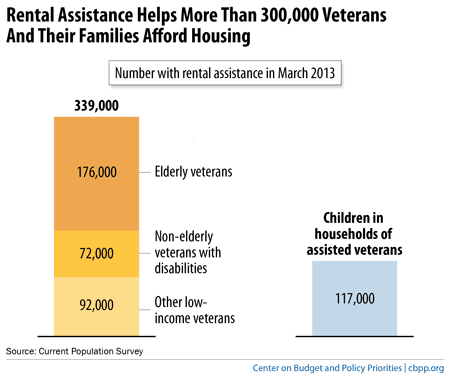BEYOND THE NUMBERS
Safety Net Provides Stepping Stone for Veterans
As we prepare to celebrate Veterans Day, it’s a good time to highlight some of the ways that the safety net helps many low-income veterans — and active-duty members of the military — make ends meet.
The Earned Income Tax Credit and Child Tax Credit: About 1.2 million veterans with children under age 18 receive either the Earned Income Tax Credit (EITC) or the low-income component of the Child Tax Credit (CTC), two tax credits for low- and moderate-income working families, according to a CBPP analysis of Census and IRS data. In addition, 280,000 families with an active-duty service member claim one of the credits.
Supplemental Nutrition Assistance Program (SNAP): Thousands of veterans in every state receive SNAP to help their families keep food on the table. Nationwide, 900,000 veterans lived in households that relied on SNAP in any given month in 2011, we estimated in an analysis of Census data. The program provides an essential support for low-income veterans, who may be unemployed, working in low-wage jobs, or disabled.
While Congress debates SNAP’s future in its negotiations on the Farm Bill, all of these veterans (along with the rest of SNAP’s nearly 48 million recipients) have begun to see a cut to their benefits this month following the expiration of a modest temporary benefit increase.
Housing Assistance: Rental assistance helps more than 300,000 veterans — the great majority of whom are poor or near poor — afford decent housing, as we describe in a new paper and illustrate in the chart below. It allows recipients to devote more of their limited resources to other basic needs, like food or medicine, and it apparently played a central role in the 17 percent reduction in veterans’ homelessness between 2009 and 2012.

But the assistance reaches only a fraction of veterans in need; many continue to experience homelessness or pay very high shares of their income for housing. And if Congress does not increase funding in 2014 for the Housing Choice Voucher program, which sequestration has hit hard, assistance for 8,000 to 12,000 low-income veterans could be cut.
These veterans have ably served our country; policymakers shouldn’t cut the programs that help them put food on the table and keep a roof over their heads.
